Mark Sisson's Blog, page 217
July 2, 2016
Layered Taco Casserole
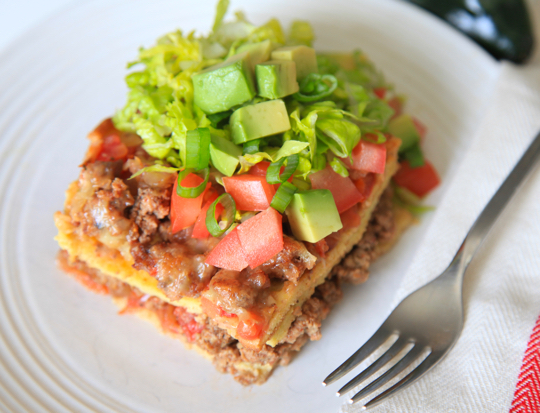 This layered taco casserole is comfort food without a helping of regret. There are still layers of everything that make taco casserole great: tortillas, seasoned ground meat, chile peppers, cheese, and a mile-high topping of shredded lettuce, fresh tomatoes, avocado and green onions. But the tortillas are Primal- and Paleo-approved, the ground meat is grass-fed, and the cheese is high-quality aged Cheddar.
This layered taco casserole is comfort food without a helping of regret. There are still layers of everything that make taco casserole great: tortillas, seasoned ground meat, chile peppers, cheese, and a mile-high topping of shredded lettuce, fresh tomatoes, avocado and green onions. But the tortillas are Primal- and Paleo-approved, the ground meat is grass-fed, and the cheese is high-quality aged Cheddar.
Traditional taco casserole can be heavy and bland, relying too much on doughy flour tortillas and greasy melted cheese for flavor. To avoid this, Primal taco casserole calls for light and airy homemade tortillas and a just a sprinkle of sharp Cheddar. The tortillas are really easy to make and versatile. Use them for all your favorite Mexican dishes that need a Primal tortilla to scoop things up.
Servings: 4 to 6
Time in the Kitchen: 1 hour
Ingredients:
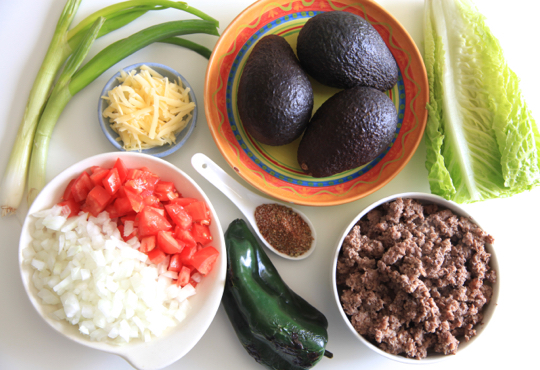
1 3/4 pounds ground beef (795 g)
1 onion, finely chopped
4 large tomatoes, chopped
1 teaspoon chili powder (5 ml)
1/2 teaspoon cumin (2.5 ml)
1/4 teaspoon garlic powder (a pinch)
1/2 teaspoon dried oregano (2.5 ml)
1/2 teaspoon sweet paprika (2.5 ml)
1 teaspoon kosher salt (5 ml)
2 Anaheim peppers or one 4.5-ounce/128 g can chopped green chiles
1 cup grated high-quality sharp Cheddar (90 g)
Garnishes: 1 heart of romaine lettuce, shredded, 2 avocados, chopped, 2 green onions, chopped, 2 tomatoes, chopped, plus other toppings like salsa and sour cream
Tortilla Ingredients (makes 8 small tortillas):
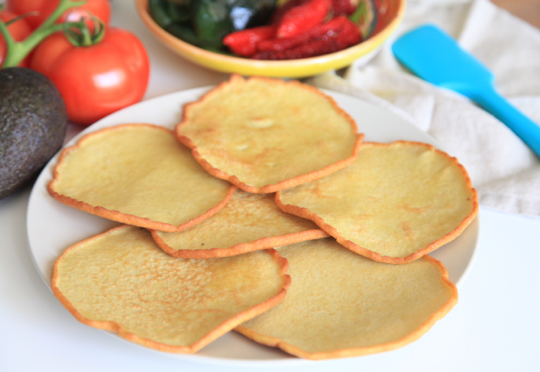
1/4 cup coconut flour (30 g)
2 tablespoons tapioca flour (15 g)
1/2 teaspoon cumin (2.5 ml)
1/4 teaspoon chili powder (a pinch)
1/2 teaspoon kosher salt (2.5 ml)
1/2 cup water (120 ml)
4 eggs
3 tablespoons Primal Kitchen Avocado Oil (45 ml)
Instructions:
In a large skillet, heat a drizzle of oil and sauté the onion until soft, 5 minutes. Add the ground beef. As it cooks, season with chili powder, cumin, garlic powder, dried oregano, sweet paprika and salt. When the meat is almost cooked, stir in the tomatoes. If using canned green chiles, stir them in now. Turn off heat and set aside.
If using fresh Anaheim peppers, set the peppers over the flame of a gas stove, or under a broiler. Cook the peppers, turning as needed, until the entire pepper is blackened. Put the peppers in a sealed bag or container to steam and cool; rub the blackened skin off with your fingers. Chop, then mix in with the meat.
In a small bowl, whisk together the coconut flour, tapioca flour, cumin, chili powder and salt.
In a large bowl, whisk together the water, eggs, and oil. Slowly add the coconut flour mixture to the wet ingredients, whisking constantly to eliminate clumps.
Heat a tablespoon of avocado oil over medium heat in a non-stick skillet. Pour a little less than 1/4 cup/60ml batter in the hot pan. Let the batter sit untouched for one minute then put a lid on the pan and cook one minute more. Flip the tortilla and fry for 1 to 2 more minutes. Continue frying tortillas until the batter is used up, making sure there is always a thin layer of warm avocado oil in the pan.
Preheat oven to 375 °F/190 °C.
Coat the bottom of a 2-quart/2 L square or round baking dish with a little oil. Add a layer of 4 tortillas. Cover with half of the ground meat. Add another layer of tortillas. Cover with more ground meat and the grated cheese.
Bake 30 minutes. Let sit 10 minutes before cutting. Garnish and serve.
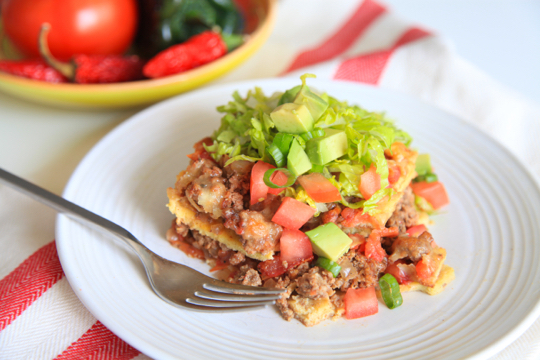




July 1, 2016
How an Accelerated Health Transformation Made Me Feel 20 Years Younger!
It’s Friday, everyone! And that means another Primal Blueprint Real Life Story from a Mark’s Daily Apple reader. If you have your own success story and would like to share it with me and the Mark’s Daily Apple community please contact me here. I’ll continue to publish these each Friday as long as they keep coming in. Thank you for reading!
 It’s been exactly three years since I contributed my success story and I’m pleased to report that my health transformation has continued—I feel even better than I did three years ago. The Paleo lifestyle continues to be the foundation for my transformation, but I’ve added in a couple of other health practices that have accelerated my transformation.
It’s been exactly three years since I contributed my success story and I’m pleased to report that my health transformation has continued—I feel even better than I did three years ago. The Paleo lifestyle continues to be the foundation for my transformation, but I’ve added in a couple of other health practices that have accelerated my transformation.
I am now 56 years old and started my transformation over four years ago. During the transformation, I have lost 70 pounds, feel 20 years younger and look 10 years younger. More impressively, I have adopted Paleo as a “lifestyle” (not a diet) and this has allowed me to continue the transformation for over four years without a backslide. This is the beauty of approaching this as a lifestyle change. The great feeling of being fit, looking good and enjoying life more provides the motivation to never go back to where I was. At this point, after four years, the weak moments are rare and I’m more often looking for additional ways to continue this life changing transformation. I have developed a few excellent new habits that I would like to share with your readers.
About a year ago, I purchased an infrared sauna to use in my home, mainly for detox purposes, but I’ve found it helpful in several other areas. I use the sauna for 30-40 mins a day and have sweat pouring out after ten minutes. I typically drink 60 ounces of water during the sauna, so my weight stays the same during the 40 minutes. But I’m sweating a ton of toxins out. I also use a salt lamp, turn the lights down, and play relaxing music. It’s a great opportunity to meditate and stay present. Excellent mind/body exercise. The sauna has many other benefits, whether burning calories, improving circulation, and improving your skin.
About six months ago, I incorporated Intermittent Fasting (IF) in my daily routine. My main motivation for IF, again, was detox and immune system strengthening. After doing some research on the various fasting approaches, I have settled on doing a daily fast beginning at 7 PM to 8 PM and ending the fast around 1 PM the next day. During the fasting period, I just drink water (lots of it) and organic black coffee in the morning. I was a huge breakfast guy and never thought I would be able to give it up. After about a week, I can honestly say that I felt very little hunger. I’m even able to do pretty intense workouts in the mornings and feel just as strong. I really encourage other readers to look into IF as there are so many benefits not even related to weight control. Some of them include: lowering your insulin and increasing growth hormones, driving cell repair each day, reducing high blood sugar (which is key to minimizing disease risk), and reducing overall inflammation.
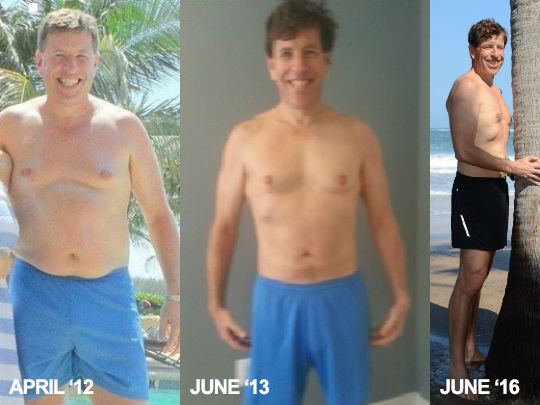
Another key change that I’ve made is related to my diet. The Paleo diet has worked really for me, but I’ve now increased focus on my carb intake. The main reason I focus on carb reduction is for weight control, decreasing inflammation, and improving cardiovascular health and HDL/LDL levels. I found the Ketogenic diet carb limits (under 25 grams) to be a bit extreme, but I think getting down to 100 grams is doable if you limit fruits and starchy veggies. Reducing high blood sugar levels is one of the keys to good health, and after you stop eating sugary foods, the next thing to go after is reducing carbs (since excess carbs are converted to blood sugar). Again, this has created a great change in my overall well-being.
The last component of my accelerated transformation has been related to exercise. I am almost fully converted from a hardcore cardio (mostly long distance running) addict to having a greater focus on High-Intensity Interval Training (HIIT). I have joined a club near my house that holds group classes focusing on HIIT/core and try to attend four times a week. They are absolute killer workouts and I feel completely drained after. I have not completely given up on cardio/running and mix it in with a goal of two hours of exercise a day.
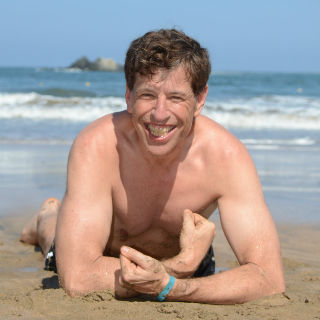 Pictures don’t lie. I continue to feel better each day and, honestly, don’t feel the effects of aging that I would have expected. Incorporating the changes I described above has resulted in an accelerated transformation. It also has given me the incentive to look for additional practices that I can incorporate to further accelerate my transformation. One of the areas that I know needs work is my overall flexibility. I have tried yoga but have not been able to establish a good cadence with it. I plan on checking back in with you in a few years to report on my transformation and share additional insights with your readers.
Pictures don’t lie. I continue to feel better each day and, honestly, don’t feel the effects of aging that I would have expected. Incorporating the changes I described above has resulted in an accelerated transformation. It also has given me the incentive to look for additional practices that I can incorporate to further accelerate my transformation. One of the areas that I know needs work is my overall flexibility. I have tried yoga but have not been able to establish a good cadence with it. I plan on checking back in with you in a few years to report on my transformation and share additional insights with your readers.
Keep up the great work, Mark!
Dave

Save



June 30, 2016
Why Fear May Be Blocking Your Primal Path (and How to Overcome It)
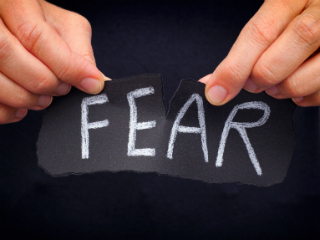 Getting healthy. It’s an admirable, enviable endeavor, you think. In fact, it’s what you’ve wanted, maybe desperately, for a long time. And then you came across Primal. You’ve been convinced for a while now that it’s a good guideline for how to live—reading the blog, maybe trying a Primal-friendly meal now and then. You’ve even read a book (or cookbook)—or two. You have the knowledge. You have the interest. Maybe you even feel a fire lit under you by a recent diagnosis, an additional medication, or an added 10, 20, or 50 pounds. The next logical step would be to put a Primal plan into action, right? Take it on, make it happen. Change your life for the inconceivable better. But, for many of us, that’s where fear rushes in to gum up the whole process.
Getting healthy. It’s an admirable, enviable endeavor, you think. In fact, it’s what you’ve wanted, maybe desperately, for a long time. And then you came across Primal. You’ve been convinced for a while now that it’s a good guideline for how to live—reading the blog, maybe trying a Primal-friendly meal now and then. You’ve even read a book (or cookbook)—or two. You have the knowledge. You have the interest. Maybe you even feel a fire lit under you by a recent diagnosis, an additional medication, or an added 10, 20, or 50 pounds. The next logical step would be to put a Primal plan into action, right? Take it on, make it happen. Change your life for the inconceivable better. But, for many of us, that’s where fear rushes in to gum up the whole process.
It isn’t that fear is an unnatural emotion. It’s one of the key primal instincts. What, after all, could be more steeped in clear evolutionary purpose? Fear is what’s enabled survival for eons. But no one is facing down a large-fanged predator here as they consider retooling their health. There’s no inter-band skirmishes to charge into, no earthquakes convulsing beneath one’s feet. There’s not even a precipitous cliff—at least not a literal one.
Regardless of the evidence, and all the positives to be gained, for some of us fear is still the loudest voice in the room. And it can immobilize us. It can keep us locked in a way of life and a condition of health in which we have no real interest in staying.
Sure, sometimes there are genuine logistical concerns that get in the way of pursuing our health goals. But when the legitimate considerations are covered to all reasonable extent, it’s time to look at the emotional phantoms straight on and put them in their place.
Many fears are the fears of endeavor—grounded in unsupported anxieties and false distinctions. These are the fears that we fumble to determine solutions for or simply ones that undermine our ability to be confident in our capabilities at all. Some tell us we’re somehow different than other people. Some raise specters of self-doubt, insecurity, or inadequacy. These are particularly slippery, and they’re often the fears people deal with when they envision taking on significant health and lifestyle change.
Let’s look at some of the most common fears that come into play when people of different bodies, ages and backgrounds move toward Primal-aligned health goals. And let me offer (and invite you to share your feedback on) some practical takeaways for overcoming situational fears as well as a few emotional insights for calling fear’s bluff.
“I feel like I’m too far along in life to make significant changes. What if I’m just too old or too steeped in chronic illness to make a real difference in my health?”
The body is a resilient organism, and it remains so into advanced age. And although more care is needed to shift or reverse interconnecting dysfunctions in the case of chronic illness, the body’s resiliency is nothing to be underestimated. I’ve knocked out 60 years and then some, and so have many others in this community. Even if you’re well past 60 or 70 and just starting major health change, know that the Primal Blueprint is as applicable to you as it is anyone else.
Research supports our ability to get into great shape and even be as fit as those decades younger than us. Yes, the body benefits from being in good health throughout life, but taking up an exercise program or shifting to a better diet in later years can still slow or reverse aging processes. The same can be said of mitigating or even reversing chronic illness. (1, 2, 3, 4, 5)
Are you more inspired by personal accounts rather than research? Check out Faye’s success story. Even after a heart attack and years with diabetes, her choice to go Primal teaches what’s possible at 87-years-old.
“What if I can’t do this the way other people can? How can I live up to what other people in the Primal community do?”
You’d be surprised how often I hear this. It’s a case of comparison, which can at its best inspire us and at its worst can paralyze us.
Everyone is on their own path, and ours is intended to be entirely its own landscape.We come to the PB with unique histories, varying tastes, individual interests, and different emotional states. It pays to be patient with each of these and expect that they’ll all play a part in transitioning to a Primal way of living.
Because here’s what I’ve found. The people who take the mentality of undoing, of exchanging themselves for a “better” version, are the ones who ultimately struggle the most. On the other hand, those who move into the Primal Blueprint with a mindset of “intactness”—an assumption that who they are and what they enjoy will find a comfortable place in this lifestyle—tend to be much happier and more successful over the long term.
I promise you there are no Primal police that will be watching you. Everyone in this community does Primal their own way, and all of them I know have nothing but support and admiration for anyone looking to take up the lifestyle.
Read the stories and posts when they truly inspire, but give yourself space to grow into new practices. Focus on the beginner articles and forum threads for a while to let yourself be in the transition and feel encouraged there. This also applies if you’re a Primal veteran who’s hit some snags. It’s never a bad time to go back to the basics.
“I don’t know how I’ll be able to afford this way of eating.”
As significant and legitimate as this fear is, it’s thankfully one of the simpler anxieties to quash.
Let’s start with diet. There are the basics of primal eating, and then there are the ideals. The basics (e.g. low to moderate carb intake, ample protein and healthy fat intake) are what set the stage (supported by the non-dietary aspects) for a healthy metabolic profile and fat-burning default. The additional, “ideal” features of organic, pastured, grass-fed, etc. are preferred when possible. Few people can conform every day and definitely every meal to this standard. It’s never about perfection.
Over the decade this blog has been around, we’ve had many a post highlighting cost saving strategies for everything from low budget veggie ideas to cheap meat cuts. Likewise, we’ve talked sourcing with tips for hunting and gardening, purchasing direct for meat and produce shares, and most recently, benefiting from the bulk power of wholesale pricing and online retailers.
But I’d be remiss if I didn’t point you in the direction of the MDA Forum as well. Let me tell you, I learn something there every day. This community will take up any question you have about shopping and living well.
“How will I explain my lifestyle to people outside the Primal community? What will people think of me?”
I don’t profess to have sway over all the people you’ll come across. Probably a fair number of people will at some point have a question or be thrown by your aberrant shoes, food, sleep schedule, or other Primal quirks. Some will participate in an annoying chorus akin to “You’ll shoot your eye out.” Others will be intractably and personally offended at your rejection of conventional practice. (These are generally people who have a hard time separating choice from righteousness.) The good thing in life (and one of the upsides of living in large communities these days) is you can ignore what the vast majority of people think of you because you won’t see them that often.
For the people you have to and want to see on a regular basis, understand that you’re under no obligation to explain yourself. Even if you feel following that will be hard, accept this truth and then decide if you want to respond to their questions or concerns. Viewing it through the lens of choice automatically lets you off the hook and opens up possibilities. Know, too, that you aren’t responsible for how others feel.
If you wish to say something about your decision to live and eat Primally, keep your explanation simple and personal. It’s an individual choice that makes you feel good and that has offered you benefits. Give yourself the freedom to not proselytize. Some people will be genuinely interested in hearing more and may want to try it themselves. In those situations, you can feel free to share your stories, but keep it simple and encouraging for those who are fearful or concerned. Finally, for the truly antagonistic, walk away when you can and set a clear “to each his/her own” boundary when you can’t. You answer to no one but yourself.
“Conventional wisdom seems so diametrically opposed to what the Primal Blueprint is all about. What if I make my health or weight issues worse?”
I understand this fear. I truly do. It feels risky to go out on that limb when you’ve heard contrary messages your whole life. If the health condition you’re in is already serious, it can feel scary to think about the prospect of making things worse.
I can give you every scrap of science here supporting the Primal method of taking charge of one’s metabolic health and greater well-being, but I have several books that would do a better job than a paragraph here. And in these cases, I think it’s more personal than taking my word for it or even science’s word for it. It’s a fear of losing control, of surrendering power over one’s health. Because in these circumstances, we already feel so disempowered.
More than anything else, I’d suggest you hold onto that self-authority. I’m not saying run back to CW. I’m saying try the Primal Blueprint for yourself on your own terms with full skepticism in play. Don’t come at the PB as truth. Come at it as a completely self-directed trial—a rational, strategic exercise in self-experimentation. That’s all. If you can even consider 21 days, that’s generally enough to give you a good view into what the PB can change for you when you approach it earnestly.
If you genuinely follow the Primal principles and get negative results, you’ll simply know something isn’t working for you. But for now, start it—knowing you can dump the whole thing whenever you want. You can always get your previous health and weight back with no questions asked.
But chances are (because I’ve seen it thousands of times again and again) you’ll see changes, feel changes, and suddenly start believing in change again. Having tasted the initial benefits, you’ll want more, and more time with the lifestyle. Experimenting your way to how it works best for you long-term will bring you more of those shifts, more of the vitality you’d given up on, more of the life you thought wouldn’t be yours to live.
In this as in all cases, let fear inspire an attentiveness and deliberateness for the path in which you seek out the answers, the support and the experimentation that will let you truly claim this plan as your own. Because there’s inconceivable potential to come if you just keep going.
Thanks for reading, everyone. What fears have you faced when going Primal, and what advice do you have for others in dealing with those fears along their Primal path?
Like This Blog Post? Subscribe to the Mark's Daily Apple Newsletter and Get 10 eBooks and More Delivered to Your Inbox for FREE



June 29, 2016
10 Reasons You Should Be Eating More Monounsaturated Fat
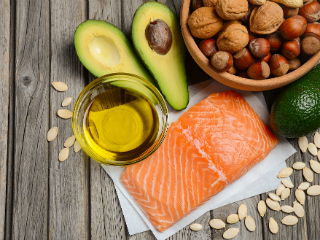 Amidst all the debate over how saturated fat and PUFAs differentially affect our health, we often forget about monounsaturated fats, or MUFAs. These are almost universally tolerated, if not loved. No one really maligns them. Vegans and carnivores alike consume them on a regular basis. You find ’em in nuts and seeds alongside PUFAs. You find them in animal fats alongside saturated fats. In most healthy diets, whether alternative (Primal, keto) or conventional (Mediterranean, AHA), monounsaturated fats feature prominently. They can’t really be avoided. But they’re an afterthought in hard core nutrition geek circles. Probably because no one really attacks them. Probably because they’re uncontroversial.
Amidst all the debate over how saturated fat and PUFAs differentially affect our health, we often forget about monounsaturated fats, or MUFAs. These are almost universally tolerated, if not loved. No one really maligns them. Vegans and carnivores alike consume them on a regular basis. You find ’em in nuts and seeds alongside PUFAs. You find them in animal fats alongside saturated fats. In most healthy diets, whether alternative (Primal, keto) or conventional (Mediterranean, AHA), monounsaturated fats feature prominently. They can’t really be avoided. But they’re an afterthought in hard core nutrition geek circles. Probably because no one really attacks them. Probably because they’re uncontroversial.
Let’s change that. Today, I’m going to explain why, in explicit detail, you should be eating more monounsaturated fat—if you aren’t already.
1. It’s surprisingly stable
Saturated, monounsaturated, and polyunsaturated fats are defined by their molecular structure. When we talk about “oxidized fatty acids,” we’re talking about oxidation of the carbon atoms that lie between double bonds. PUFAs are highly unstable because they have two more double bonds; that’s two more weak spots vulnerable to oxidative damage. Saturated fats are highly stable because they have no double bonds, no weak spots. MUFAs, with their one double bond, are theoretically vulnerable to oxidation—but it rarely actually happens. The literature shows that MUFA-rich oils, like olive and avocado, are highly resistant to heat damage during cooking.
2. It makes mitochondria function better
Mitochondria are (almost) everything. Cellular power plants whose design we co-opted from parasitic bacteria billions of years ago, mitochondria provide ATP—the basic energy currency. They regulate both individual cellular metabolism and, since we’re just collections of cells, overall metabolism. The more mitochondria we have and the better they work, the more energy we’re able to consume, utilize, and produce. They’re quite essential.
They’re also sensitive to oxidative stress if they’re not built with the right materials. Mitochondria whose membranes contain high levels of PUFAs are less stable, more prone to oxidative damage, and function worse than mitochondria with MUFA-rich membranes. We need our mitochondria to work if we’re to enjoy good health and a strong metabolism, and MUFAs make that possible.
3. It’s a primary constituent of many healthy foods
We eat foods, not nutrients, remember. And by choosing foods high in monounsaturated fat, in a roundabout way you’ll be choosing foods high in many important nutrients.
Consider the mac nut. Buttery, sweet, associated with many health benefits. A favorite treat of mine is salted, dry-roasted mac nuts in Greek yogurt with a drizzle of raw honey. “Salted”? Yep. Try it.
Consider the avocado. Everyone’s favorite “healthy fat.” A rich source of potassium, half an avocado can reduce the postprandial inflammatory load of a big meal. I don’t mean to use scare quotes in a negative way—I love avocados. That everyone but Ray Peat embraces it amuses me, is all.
Consider the almond. A surprising source of prebiotic fiber and repository for vital minerals, the almond is mostly known as a “bag of linoleic acid.” It has PUFAs, sure, but MUFAs are still the primary fatty acid present in the almond. Didn’t know that, did you? We forget.
Consider the olive, whose MUFA-rich oil reduces inflammation in heart disease patients.
Consider the egg yolk. Easiest/tastiest source of choline around. Great source for folate, selenium, B12, complete protein, dietary cholesterol (yes, it’s important). Go pastured and it gets even better. Did you realize that MUFA is the predominant fatty acid in your average egg yolk? It is.
Consider grass-fed beef. Who doesn’t love it? It’s higher in nutrients, lower in cruelty. Even vegans will begrudgingly admit it’s “better” and “slightly less murderous” than conventional beef. Turns out that the grass-fed stuff is higher in MUFAs (and stearic acid, a type of saturated fat that desaturates to MUFA in the body).
4. It supports immune function
Research has established the pivotal role of oleic acid in immune function: it improves wound healing, increases the elimination of pathogens, and is associated with protection against autoimmune diseases.
5. It protects against diabetes
Several lines of evidence point to a protective effect.
Observational studies consistently show an inverse relationship between MUFA consumption and diabetes (and diabetes-related complications, like kidney damage).
Controlled trials find that MUFA-rich diets improve glycemic control and lipid profiles in type 1 diabetics. In type 2 diabetics, they reduce insulin resistance (especially compared to PUFA-rich diets).
Animal trials show that MUFA reverses the tendency of inflammatory cytokines to depress insulin production, making it vital for type 1 diabetics for whom depressed insulin production is a major issue.
Eat it up, diabetics.
6. It has anti-tumor mechanisms
Oleic acid plays a crucial role in the initiation of several anti-carcinogenic cellular processes. It even combines with bovine lactoferrin (a bioactive protein found in milk) to form a novel anti-tumor compound, and animal studies indicate a number of anti-cancer properties inherent to oleic acid. Don’t go sticking raw milk with olive oil in your Vitamix and selling it as a cancer cure or anything, but that’s pretty cool.
7. It’s great for blood lipids
Even as controversy over the importance of the lipid profile rages across the nutritional world, one thing remains certain: whatever stance you take, monounsaturated fat has a neutral or positive effect. It increases HDL and reduces LDL. It reduces triglycerides and increases the all-important HDL:Total ratio. It does this in healthy people and diabetics, in the overweight and the heart disease-stricken. It does this without increasing LDL’s propensity to oxidize, as happens in high-PUFA diets.
8. It’s good for your joints
MUFA (and its constant companion, saturated fat) has been shown to increase the resilience of cartilage exposed to stressful conditions. Omega-6 PUFAs have the opposite effect. This may come down to oleic acid’s inhibitory effect on TNF-alpha, a cytokine involved in local joint inflammation.
9. It’s widely accepted
We like to flout conventional wisdom, but it’s important to only do that when it’s actually wrong. Sometimes conventional wisdom is correct. And when everyone agrees on something, take a closer look before discarding it.
It turns out that the pro-MUFA stance is not based on fluff or propaganda. Real legitimate science shows that MUFAs are beneficial. The kind of science that your average vegan, paleo, and conventional cardiologist would all cite and find credible.
10. It’s found in the best mayo on the planet
Now, I have no idea what pure oleic acid tastes like. Not much, I’d imagine. But think about olives, bacon, beef, brie, and, oh, avocados. Foods that contain it tend to be delicious.
This is why I chose avocado oil as the foundation for most of our Primal Kitchen products. Whether it’s mayo (chipotle lime or regular), dressing (Greek vinaigrette or honey mustard), or straight up avocado oil, MUFAs as they appear in the wild taste as good as they are good for you.
Oleic acid, the primary MUFA, isn’t magic. It’s not a “superfood.” It’s the work horse of the fatty acids. It’s the foundation. It’s the one constant amidst all healthy diets. Meat eaters get tons of it through animal fat. Lacto-ovo vegetarians get it through dairy and eggs. Vegans get it through nuts and oils. We all carry a lot of it in our adipose tissues, if not by weight then by percentage. Our bodies even convert certain saturated fats, like stearic acid, into oleic acid; that’s how much our bodies need it.
It’s time we pay closer attention to MUFAs. Don’t you agree?
What did I miss? What other health benefits do oleic acid and other MUFAs offer? What’s your favorite way to obtain them?
Thanks for reading, all!




June 28, 2016
Why Exercise Actually Does Matter for Weight Loss
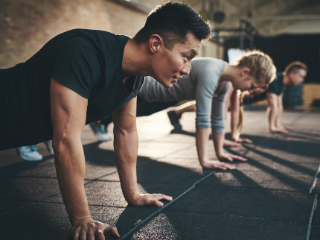 If you follow health news, you might be thinking exercise doesn’t matter when you’re trying to lose weight. Vox just published a big piece showing how useless exercise alone is for weight loss. The NY Times says “eating less” is way more effective than “exercising more.” Obesity researchers like Gary Taubes and Yoni Freedhoff—who don’t agree on much else—both think using exercise to fix obesity is futile. I’ve always said that 80% of your body composition is determined by your diet, not how you exercise. And everyone knows it’s really hard, bordering on impossible, to out exercise a bad diet. You might be able to out exercise a bad diet if all you care about is abs and race times and make it your job, but eventually your poor health will catch up with you.
If you follow health news, you might be thinking exercise doesn’t matter when you’re trying to lose weight. Vox just published a big piece showing how useless exercise alone is for weight loss. The NY Times says “eating less” is way more effective than “exercising more.” Obesity researchers like Gary Taubes and Yoni Freedhoff—who don’t agree on much else—both think using exercise to fix obesity is futile. I’ve always said that 80% of your body composition is determined by your diet, not how you exercise. And everyone knows it’s really hard, bordering on impossible, to out exercise a bad diet. You might be able to out exercise a bad diet if all you care about is abs and race times and make it your job, but eventually your poor health will catch up with you.
That doesn’t mean exercise doesn’t matter for weight loss, though. It does.
What is true? The value of exercise doesn’t depend on its caloric burn. The studies cited in the media pieces make it clear that energy expenditure through exercise has very little effect on weight loss. To focus on that and discard the effectiveness of exercise in general is misleading, though. And wrong, because fat loss isn’t just about mechanistically burning calories.
Notice what I wrote: fat loss.
We’re not trying to burn bone, or dissolve muscle, or shave a few pounds off our internal organs. All those things will reduce your weight but also your health, performance, and lifespan. We’re trying to burn fat. To take a couple notches off the belt. To look good naked. That’s what nearly everyone means when they say “lose weight.” So even if exercise doesn’t lead to a significant net loss of weight on its own, it can help us preferentially remove body fat while retaining lean mass.
So let’s see how exercise can help weight loss, both directly and indirectly. By the end of today’s post, you’ll be itching to go lift something or run really fast up a hill.
Exercise empties glycogen
If your glycogen stores are full, any extra carbs that aren’t immediately burned for energy will be shunted to your liver for conversion into fat, aka de novo lipogenesis. If you exercise hard enough to empty those glycogen stores, you’ve just cleared space for the carbs you eat. They’ll refill glycogen stores. Conversion into glycogen is a desirable metabolic fate for carbs. Carbs locked into muscle glycogen stores will not contribute toward fat stores. Instead, they’ll contribute toward high-intensity physical activity that aids fat loss.
One study found that depleting glycogen stores with exercise reduced postprandial de novo lipogenesis in subjects fed a carb-rich meal. Compared to the non-exercising control group, the exercisers experienced three-fold higher postprandial muscle glycogen synthesis (more dietary glucose became muscle glycogen) and a 40% reduction in hepatic triglyceride synthesis (less liver fat produced).
Exercise improves blood glucose control
Although the scientific community debates the etiology of “hangry,” I think it usually stems from reactive hypoglycemia. Consider the sugar-burner whose blood sugar spikes after a meal then drops lower than it was before the meal. He won’t be able to access body fat for energy. His body wants the only kind of energy it knows—sugar—and it’s just not there. He’s going to eat something sugary and right away.
Now consider the fat-burning beast with low blood sugar. Is he going to freak out and binge because no energy’s available, or does he have the metabolic machinery necessary to take advantage of all that animal fat hanging around?
Who’s hungrier? Who eats more? Who gains more weight?
Smart exercise can help you establish better control over your blood glucose levels. It doesn’t take much, and most modalities work: moderate resistance training, moderate endurance training, both uphill and downhill walking, walking, walking meditation, sprinting.
The best type of exercise that improves blood glucose control without inducing hypoglycemia in its own right is probably low-rep, high-weight strength training, walking, and short sprints (and I mean really short, like 5-8 second bursts).
Exercise improves sleep
Sleep is where fat loss actually occurs, because when you sleep, you experience the biggest spike in fat-mobilizing growth hormone. When you don’t sleep, cortisol increases to compensate for the groggy headspace and muddy thinking. Chronic levels of stress hormones, from chronic bad sleep, lead to fat retention, especially in the belly.
Strength training and aerobic training all help sleep (sprinting should as well, but I wasn’t able to find any solid evidence in either direction). Put nursing home seniors on an elastic band training program and you’ll improve their sleep. Put hard-headed obese teens on an exercise program and they’ll start sleeping better and longer. Exercise even improves depression-related sleep disturbances and mitigates muscle loss caused by sleep deprivation. It’s not magic, but it’s close.
When you exercise can affect your sleep negatively, of course. Don’t train at 11 PM in a fluorescent light-lit gym with blaring pop music. Don’t settle for 5 hours a night because you want to wake up at 5:30 for a workout.
Exercise beiges white fat
What are those words you just wrote, Sisson? “Beige” isn’t a verb.
You all know about brown fat, the metabolically-active genre of body fat that burns calories to keep mammals warm in cold temperatures. It increases energy expenditure and the fatter you are, the less brown fat you have and the less metabolic activity you show in the brown fat you do have. Brown fat is awesome stuff and almost certainly makes it easier to lose fat.
One cool thing about certain types of exercise is that it can make white adipose tissue behave more like brown adipose tissue. Hence, “beige.” It does this by reducing the size of fat cells, reducing the lipid content of said fat cells, and building more energy-consuming-and-ATP-producing mitochondria within the fat. Transplanting exercise-induced beige fat cells into sedentary controls improves their body-wide metabolic homeostasis and increases their muscles’ uptake of glycogen. This beigeing of white fat improves body-wide metabolic homeostasis and increases the uptake of glycogen by your muscles. It helps nutrients go where they’re useful.
(To make sure your exercise is working, remove a dime-sized pat of butt fat with a grapefruit spoon and observe the color. If it’s beige, you’re on the right track!)
(Please disregard the previous parenthetical.)
Exercise increases our resistance to stress
People respond to stress in many different ways. Some stay awake at night, endlessly ruminating on the hundreds of outstanding responsibilities. Some freeze up, unable to progress. Some go hungry, refusing even their typical favorite foods. But perhaps the most common response to psychosocial stress is binge eating junk food (PDF). This is especially common among women (PDF), who tend to focus on salty, sweet, and fatty snack foods. Stress eating is a major risk factor for weight gain; anything that reduces stress will probably increase fat loss.
Exercise blunts our stress response. When we’re physically fit, or we’ve just come off a tough 30 minute lifting session, stressors that’d fell a sedentary person just roll off the back. Training doesn’t just make our muscles stronger and our cardiovascular system more efficient. It trains our psyche, too.
Exercise makes movement fun again
It won’t always do this. But in my experience, when people get fitter, stronger, faster, and more confident in their own bodies, they enjoy their own bodies again. They start moving for the sake of moving. They’ll go for hikes because they enjoy it, not because they’re trying to work out. They’ll play sports again, and start walking when they would have driven. Movement becomes an integral part of their lifestyle. And once non-exercise activity thermogenesis—energy expenditure through daily movement, not formal exercise—increases, fat loss often follows.
Exercise increases your calorie sink
Exercise gives you a little wiggle room. It lets you eat enough to be satiated. It allows you to eat enough food to get the micronutrients you need. A full-on calorie restriction weight loss diet without exercise is rough; you must micromanage your entire day just to ensure you’re obtaining the vitamins and minerals your body needs while battling constant hunger. When you throw in exercise, you can eat a bit more. You don’t have to plug everything into a nutrition calculator. You can have an extra helping of potatoes to get more potassium, resistant starch, and magnesium. You can add another half cup of full fat yogurt with a blueberries to get your calcium and phytonutrients. Fat loss diets get easier when you train.
“Exercise” doesn’t tell us much, of course. There are many ways to exercise, and some are better than others for improving body composition and burning fat.
Much has been made of the studies showing that people training for a marathon fail to improve body comp. Over the course of 18 months of hardcore marathon training, males lost just 2.4 kg of fat and women didn’t lose any. That’s 18 months of pounding the pavement, and weight barely budged (and not at all in women). Everyone knows by now that endurance training isn’t great for body comp.
The overall most effective way for your average overweight to obese person starting from square one to lose fat and retain lean mass is resistance training combined with a low-carb Primal way of eating.
A recent study found that the most effective method for weight loss in the severely obese was diet+resistance training. Compared to endurance training+diet or endurance training combined with resistance training+diet, simply focusing on strength training and diet produced the best results for the severely obese. The most effective kind of strength training was whole body exercises using free weights. There was some evidence that if you wanted to add “cardio” training to your lifting, high-intensity interval training/sprinting was the only one that really worked. Typical endurance training was ineffective. This makes sense. It’s high-acute stress (your workouts are really tough but end quickly) and low-chronic stress (which few people, least of all sedentary obese people, are equipped to handle).
For people who are close to their ideal body composition but want to shed the last 10-12 pounds of body fat, sprinting has to be considered. This is the simplest (yet most intense) way to lean out those last few pounds.
For everyone else: lift, walk lots, and sprint if you’re able.
But honestly? Almost everything works. No matter what exercise modality you study, they’ll all generally improve your metabolic health, increase your muscles’ capacity for glycogen, increase your strength, improve whole-body glucose control, help you sleep better, and make your body fat a little more metabolically active. They can easily get out of hand—I’m looking at you, endurance athletes, 5-6x weekly CrossFitters—but nothing has to.
Combine your exercise with a Primal way of eating and you’ll be on your way to easy, sustainable fat loss. I’m biased, of course, but for good reason: this stuff works. A recent study of the paleo diet in middle aged type 2 diabetics found that while diet alone works (especially if it’s something like paleo) really well, it works even better when you throw in some exercise.
Over the course of 12 weeks, paleo diet-only subjects told to follow standard exercise recommendations (moderate cardio for 45 minutes to an hour three times a week) lost 5.7 kilos of body fat. Those who participated in supervised aerobic and resistance exercise lost 6.7 kilos.
Diet-only subjects lost 2.6 kg of lean mass, paleo exercisers only lost 1.2 kg of lean mass.
Leptin, the pro-metabolism hormone that increases satiety and energy expenditure, dropped by 62% in the diet-only group. In the exercisers, leptin only dropped by 42%. Higher leptin means higher energy expenditure and lower appetite—both important for weight loss.
All in all, paleo dieters who exercised lost more body fat, retained more muscle, and had stronger metabolisms than those who didn’t. Sounds familiar, eh?
To sum up, training and diet work synergistically. You need both, and stalls in weight loss can often be countered by doing whichever one you aren’t. For most of you reading this, you’ve got the diet down pat. You’re eating well, you’re monitoring what you consume. But you might not be training. Today, right now, that stops. You have the tools you train effectively. You have the justification to train. You now know how imperative it is for your health, your performance, and, yes, your body fat levels that you move your body consistently.
Directly using exercise to incinerate calories and shift your energy balance isn’t sustainable. Eventually, you’ll burn out, or start bingeing on junk, or the health consequences will surpass the benefits.
Using smart exercise—lifting heavy things, running really fast once in awhile, running longer distances without lapsing into chronic cardio,walking, hiking, biking, climbing, playing, and generally just moving—to supplement a healthy diet is the only way to do it.
If exercise aids fat loss, it does so indirectly. It builds lean mass that consumes more energy and perpetuates more exercise. It clears glycogen stores, ensuring the carbs you do eat go to a good cause. It improves blood sugar control, limiting the peaks and valleys that cause many people to snack. It improves your mental health, self-confidence, and resistance to stress, deterring the types of destructive, depressive behaviors that often lead to binging and gorging and weight gain. It even seems to improve our sleep habits.
But it still does it.
What do you think, folks? What’s been your experience with exercise as a tool for fat loss? Has it worked? Has it not? Let me know down below!
Thanks for reading.




June 27, 2016
Dear Mark: How to Eat Blackstrap Molasses; Healthy Whole Grains Studies
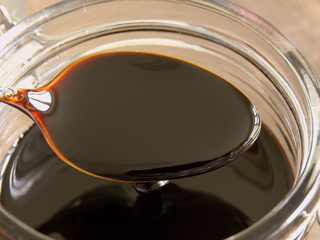 For today’s edition of Dear Mark, I’m answering two reader questions. First, I answer a very specific question about blackstrap molasses, that nutrient-dense sweetener with the distinctive taste. How can a person who hates molasses work it into their diet? Next, I address concerns surrounding a set of healthy whole grain studies that I’m sure you’ve been hearing about. Are whole grains really healthy? Will they make you live long and prosper? Is there something unique to whole grains we’re missing out on?
For today’s edition of Dear Mark, I’m answering two reader questions. First, I answer a very specific question about blackstrap molasses, that nutrient-dense sweetener with the distinctive taste. How can a person who hates molasses work it into their diet? Next, I address concerns surrounding a set of healthy whole grain studies that I’m sure you’ve been hearing about. Are whole grains really healthy? Will they make you live long and prosper? Is there something unique to whole grains we’re missing out on?
Let’s go:
Hey Mark? Could you do something about how to incorporate blackstrap molasses into the diet? Everything I try is disgusting.
If you do dairy, mixing a tablespoon into a cup of milk is probably the most palatable. It’s downright delicious.
Add it to coffee, but only if you also add cream. Make sure not to add too much. Aim for slight sweetness. Once you start using blackstrap molasses to make foods taste sweet, you’re overdoing it. It gets gross fast.
A buddy of mine swears by a molasses smoothie: raw milk, molasses, crushed ice, instant coffee. He also agrees that you shouldn’t add so much molasses that it gets sweet, because that’s how you know you’ve gone too far.
Blackstrap goes well with winter squashes, highlighting the subtle nutty sweetness of a butternut, a delicata, an acorn. Drizzle thin ribbons, follow with salted butter, and you’re good to go.
This sounds weird, but trust me. Next time you have a handful of mixed nuts, add a little drizzle of blackstrap on top. It helps if the nuts are salted.
I’ll sometimes mix a tablespoon of blackstrap with a tablespoon of cider vinegar in a cup, fill it with ice, and add sparkling water. Quite refreshing and rejuvenating after a long hot hike or game of Ultimate.
Molasses ganache is nice. Melt 85% dark chocolate with a tablespoon of molasses in some heavy cream. Maybe a pinch of cayenne.
You might just have to tough it out, pour a tablespoon, and take it directly. Tell yourself that you’re getting 25% of the magnesium, 20% of the calcium, and 13% of the potassium you need for the day in that one tablespoon. You can handle having something gross in your mouth for few short moments.
Hi Mark:
I’m assuming that you are already planning on responding to this, but just in case, I’d love to see what you think about this recommendation – 90 grams of grains a day?!
http://well.blogs.nytimes.com/2016/06/14/eat-whole-grains-live-longer/?
Thanks,
CKemper
Just like all the others, these findings and recommendations are based on observational studies: research which tracks correlations, not interventions.
And like all the others, it can’t make accurate recommendations. The same problems apply:
Lack of true control. We’re comparing whole grain eaters to refined grain eaters. Everyone who’s “normal” eats grains. As much as this movement has taken off, the vast majority of the population eats refined, not whole grains. “Across all age groups…the public exceeds recommendation intakes of refined grains.” Does the analysis include a “Primal” group of people avoiding all grains—refined and whole—but eating tubers, vegetables, and fruit? The increase in mortality among the folks eating refined grains may be relevant for the folks eating refined grains, but that’s not you. That’s not my readership. I’d love to see that group pitted against healthy whole grain consumers.
Healthy user bias. “Everyone knows” whole grains are healthy. You’d imagine that people who choose whole grains are going to be following other healthy lifestyle and diet practices, right? Well, the authors of the study came to the same conclusion, admitting that “people with a high intake of whole grains might have different lifestyles, diets, or socioeconomic status than those with a low intake.”
The most believable explanation—and the only potential causal mechanism they explore in depth—is that the fiber grains provide has a beneficial effect on the gut biome, producing short chain fatty acids and reducing inflammation. I buy this, actually. For instance, most Americans get the majority of their paltry intake of resistant starch via whole grains, because for most Americans, eating green bananas and plantains, cooking and cooling potatoes, and making potato starch smoothies are rare behaviors (it is a little weird when you stop and think). If soluble, fermentable fibers like inulin and resistant starch are behind the supposed benefits of whole grains, shouldn’t the soluble, fermentable fibers found in non-grain, totally Primal foods work just as well?
The fact is that if you’re gonna eat grains, whole ones are healthier. If you’re going to obtain a large portion of your energy intake from grains, eating the ones with more micronutrients is better than eating the ones with none. That’s what this study says. It can’t say much about your Primal way of eating, though. We need direct comparisons to do that.
Don’t lose sleep over this one. If you’ve got a family member eating whole grains, and they appear to be healthy, they’re probably going to be okay.
That’s about it for today, folks. I hope these answers helped, and if you have anything to add (or ask), do so down below!




June 26, 2016
Weekend Link Love – Edition 406
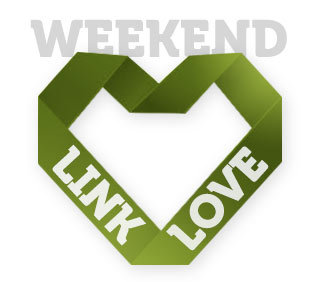 Last chance. Until this Thursday, the following digital books are on sale for only $3.99 on Amazon: Primal Blueprint Healthy Sauces, Dressings and Toppings, Primal Blueprint Quick and Easy Meals, Paleo Primer, Rich Food, Poor Food, and Primal Cravings.
Last chance. Until this Thursday, the following digital books are on sale for only $3.99 on Amazon: Primal Blueprint Healthy Sauces, Dressings and Toppings, Primal Blueprint Quick and Easy Meals, Paleo Primer, Rich Food, Poor Food, and Primal Cravings.
I’m in a new documentary on the problematic history of wheat. You can watch it online for free until June 30th. You won’t want to miss it. Click here to sign up and grab your spot.
To celebrate the upcoming launch of PRIMAL KITCHEN™ California Extra Virgin Avocado Oil, we’ve partnered with COYUCHI for a Summer Dining Sweeps! Enter to win $300 in prizes from two California companies that bring organic linens and flavorful ingredients to your table. Click here to enter.
Research of the Week
Young adults really do have weaker handshakes.
Skeletal muscle is almost everything.
Grinding frozen coffee beans produces a more uniform particle size.
Hundreds of genes might turn on after a person dies.
Using a strain of L. reuteri derived from human breast milk, researchers reversed autism-like social deficits in mice.
Exercising four hours after learning something boosts retention.
Bad sleep devastates athletes.
Outdoor artificial lighting promotes sleep disturbances.
“Comprehensive” changes to diet, sleep, mental stimulation, supplement intake, exercise, and medicine (which look a lot like the Primal Blueprint) reverse cognitive decline in patients with Alzheimer’s disease.
New (and old) Primal Blueprint Podcasts

Episode 87: Brad Kearns and Mark Sisson — Check out this episode from the archives. Brad and I talk about the delicate balance between striving for ambitious peak performance goals and pursuing longevity. Sometimes it’s a balance that even the most experienced athletes might screw up (hence our joint effort in creating Primal Endurance).
Each week, select Mark’s Daily Apple blog posts are prepared as Primal Blueprint Podcasts. Need to catch up on reading, but don’t have the time? Prefer to listen to articles while on the go? Check out the new blog post podcasts below, and subscribe to the Primal Blueprint Podcast here so you never miss an episode.
What is the Experience of Awe and Why Does it Matter?
How Defining Moderation Can Help You Reach Your Health Goals
Top 8 Changes Coming to Nutrition Labels
Interesting Blog Posts
Why standing is necessary but not sufficient.
A plan to save health journalism?
Media, Schmedia
You gotta wonder how China’s single time zone affects circadian health in that country.
Scientists urge the EPA to ban Roundup. Related: a newish paper on glyphosate’s (main herbicide in Roundup) ability to act as a glycine analogue (PDF).
Everything Else
A Silicon Valley startup is making vegan burger patties that ooze yeast-based heme-tinted “blood,” smell “like” meat, and are streaked with flecks of coconut oil.
You’ll never guess this one weird trick prehistoric mammals evolved to escape hungry predators during the Triassic.
Soon you can sleep in an incredibly comfortable chimpanzee bed (without worrying about your genitals being mauled).
Psychedelics are helping people break destructive patterns and habits. Froot Loops are supersized bites with deliciously intense natural fruit flavors and, new research reveals, physiologically relevant glyphosate residues.
A nice visual summary of what makes us fat.
Battle of the exogenous ketones.
Recipe Corner
Beef rendang is dang good (sorry, had to).
Stop messing around and just grill some beef tongue, why don’t ya.
Time Capsule
One year ago (Jun 26 – Jul 2)
Precommitment is Powerful, or Why You Should Be Like Odysseus – Dust off your old classics books.
Is the Paleo Diet Supported by Scientific Research? – Well, is it?
Comment of the Week
So would napping in the sun increase sun damage resistance?
– Ha! Simone, I’m not so sure about that one.




June 25, 2016
Fish Head Broth
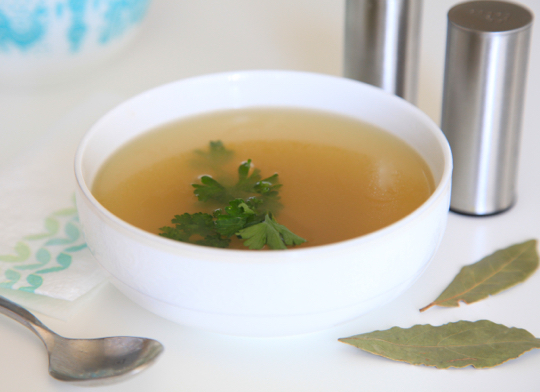 Fish broth isn’t as versatile as chicken or beef broth, but it’s a special thing, nevertheless. It’s delicate and savory with the appetizing flavor of seafood.
Fish broth isn’t as versatile as chicken or beef broth, but it’s a special thing, nevertheless. It’s delicate and savory with the appetizing flavor of seafood.
Is this the type of broth you’ll sip straight from a mug? There’s no reason not to if you like fish. Plus, you’ll get a healthy dose of omega-3s, fat-soluble vitamins, selenium, iodine, and other minerals. Enough gelatin can be extracted from a few pounds of fish parts to give your broth a gelatin-rich texture that turns to jelly when refrigerated. The most important fish part to use is the head. In fact, you can make broth entirely from fish heads, although the spine and other bones can be added as well.
Salmon heads typically give fish stock a stronger flavor; halibut, bass, cod, and other white fish give broth a milder flavor. You can use one type of fish, or a combination of different types. In this fish stock recipe, the quantity of fish parts is given by weight, not by the number of fish heads. This is because you might end up with one big fish head that weighs several pounds, or you might get several smaller heads. Either is fine.
To make fish stock, the heads and parts only need to be simmered 30 minutes with a few chopped veggies. Then, it’s ready for sipping or to be used as an ingredient in any chowder or soup recipe.
If you’re a fisherman (or woman), save the heads! If you’re not, then call ahead to a fish counter and ask for some heads to be set aside (and also ask for the gills to be removed).
Quantity: Approximately 1 quart
Time in the Kitchen: 15 minutes, plus 30 minutes to simmer
Ingredients:
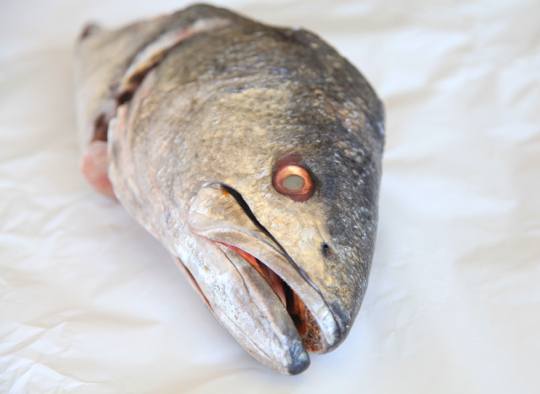
3 to 4 pounds fish heads (gills removed), or a combination of heads and bones (1.5 kg to 1.8 kg)
1 onion, chopped
2 cloves garlic, peeled and smashed
2 ribs celery, chopped
6 parsley stems
1 teaspoon black peppercorns
1 bay leaf
6 to 8 cups/(1.4 to 2 L) water, approximately (or 6 cups water and 1 cup white wine)
Instructions:
Make sure the gills of the fish are removed (they can make stock bitter). Wash the heads and parts well by soaking and running under water to remove any blood.
Put the heads and any bones in a large pot. Add the onion, garlic, celery, parsley, peppercorns and bay leaf. Pour in enough cold water to just cover the fish parts (no more than 8 cups, or the flavor will be diluted).
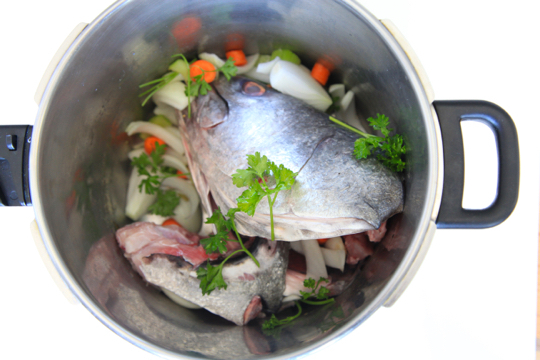
Bring to a simmer. Simmer gently for 30 minutes, never letting the broth come to a full boil. Skim any foam that rises to surface.
Strain in a colander, pressing on the solids to release liquid. Strain again, this time through a fine mesh strainer. Chill the broth.
Refrigerated fish stock will stay fresh up to 5 days, or can be frozen for several months.
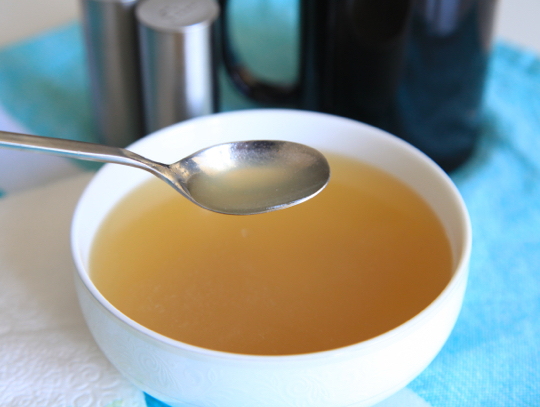

Save



June 24, 2016
Triathlete Overcomes Debilitating Inflammatory Disease with Primal Endurance
It’s Friday, everyone! And that means another Primal Blueprint Real Life Story from a Mark’s Daily Apple reader. If you have your own success story and would like to share it with me and the Mark’s Daily Apple community please contact me here. I’ll continue to publish these each Friday as long as they keep coming in. Thank you for reading!
 I’d really like to share my story of success with readers because I feel that there are many who could benefit from hearing about alternatives to traditional Western medicine for things like: AS, OA, Reiters syndrome, Gout, RA, Psoriatic Arthritis and many more related conditions.
I’d really like to share my story of success with readers because I feel that there are many who could benefit from hearing about alternatives to traditional Western medicine for things like: AS, OA, Reiters syndrome, Gout, RA, Psoriatic Arthritis and many more related conditions.
Lets begin my story a few years back in February 2013. I was a fairly accomplished 22 year old age group triathlete, paramedic student, hockey player, free-skier and all around decent athlete, in preparation for my second of many 70.3 (half Ironman) and full IM (Ironman) races. I had just finished a long bike/treadmill brick session (bike to run with no rest for those not familiar with the vernacular), that was consistent with the “black hole” training that the boys reference so often in Primal Endurance and on the Primal Endurance Podcast. I was eagerly anticipating the oven pizza, pasta bowl and chocolate milk that had become the ritual of post training “refueling,” and to be honest… real staples of my diet at the time, when I began to feel excruciating pain in my hips, back and knees.
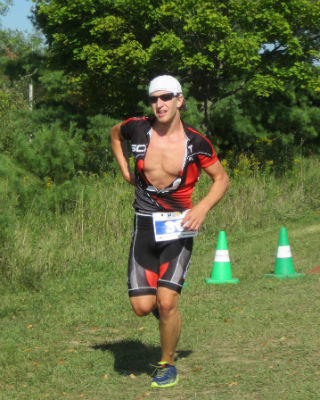 This pain was unlike any post training soreness that I had ever experienced and I immediately rushed to the ER (being a paramedic in training at the time I knew the burden people place on the hospital system in Canada, so for me a trip to the ER was not to be taken lightly). The ER Doctor prescribed me a high dose NSAID and you guessed it…mitt-fulls of Percocet, which I happily gulped down to mitigate some of the pain. Fast track to two months from the incident: the pain did not subside. As a matter of fact, it worsened in my back to the point that I needed help ambulating and even using the washroom. Dozens of trips to my family doctor had resulted in many consultations, all of which pointed to an athletic injury, which I insisted was not possible.
This pain was unlike any post training soreness that I had ever experienced and I immediately rushed to the ER (being a paramedic in training at the time I knew the burden people place on the hospital system in Canada, so for me a trip to the ER was not to be taken lightly). The ER Doctor prescribed me a high dose NSAID and you guessed it…mitt-fulls of Percocet, which I happily gulped down to mitigate some of the pain. Fast track to two months from the incident: the pain did not subside. As a matter of fact, it worsened in my back to the point that I needed help ambulating and even using the washroom. Dozens of trips to my family doctor had resulted in many consultations, all of which pointed to an athletic injury, which I insisted was not possible.
My family doc finally came to her senses and ran a panel of blood work, primarily testing inflammatory markers, and sure enough discovered I had the HLA-B27 marker that signified a high probability I had a condition called Ankylosing Spondylitis. She immediately referred me to a Rheumatologist who prescribed me an even higher dose NSAID and told me to refrain from all contact sports, activities that place a significant load on the body, or heavy lifting of any sort (basically everything I lived for, including my future career as a paramedic).
Now skip ahead to early 2016. I am a 25 year old working paramedic with no athletic goals, a Michelin tire around my midsection from the “McDiet” that so many shift workers follow, and the medicine cabinet of a brittle 85 year old. I stumble upon a JRE Podcast featuring none other than Mark Sisson, who begins preaching these theories about how switching to a Primal lifestyle can significantly reduce symptoms of diseases and conditions, otherwise only treated using medication that produce a ton of adverse side effects. At first, I will be truly honest, I was a bit skeptical, but given the point I was at in life I would try just about anything to get back to the lifestyle I had prior to my diagnosis.
Within a month of beginning to adhere to The Primal Blueprint/Primal Endurance lifestyle (scrapping all bread, rice, pasta, refined carbs and sugars, and sticking to a diet rich in nutrient-dense vegetables, fruits, meats/fish/foul nuts and seeds) the pain in my back disappeared, my knee went from the size of an orange back to normal, and the pain in my hips completely went away. I began to use the “180-age = target heart rate” for swimming, biking and running again, and found I was able to play hockey and ski again. I finally felt like I had the energy that a normal 25 year old should have.
A visit back to my Rheumatologist and chemistry panel confirmed that I had put my body into full remission of my Ankylosing Spondylitis. I was able to come off my medication and enjoy the lifestyle I was meant to live. I signed up for my first 70.3 since my diagnosis and hit a personal best in my local sprint triathlon, using all of the concepts taught in Primal Endurance (including Dr. Phil Maffetone’s theories, rest/recovery strategies, weight training, HIIT training, fat burning engine, etc.). I have more energy than ever and have been able to far surpass the physique that I once had as a “black hole” style athlete.
Thanks for taking the time to read my story and I really hope that those who are struggling with similar issues can find some inspiration from this.
Chris F.
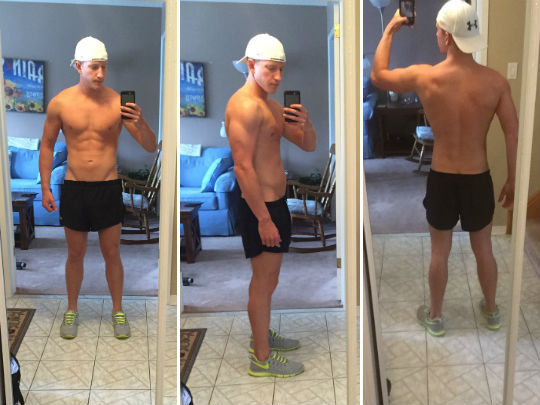
Like This Blog Post? Subscribe to the Mark's Daily Apple Newsletter and Get 10 eBooks and More Delivered to Your Inbox for FREE
Save



June 23, 2016
From Float Tanks to Silent Retreats: Why Are People Looking for More Extreme Forms of Sensory Deprivation?
 I’m thinking about a Philip K. Dick story, never published, perhaps never put down on paper or even imagined. In this story, which might only exist in my mind, the world is awash in sensory stimuli. Bright lights, flashing signs, an endless cacophony. A world of quick jump cuts. It’s like the Khaosan Road at 11 PM, standing on a Los Angeles overpass at rush hour, or living inside a Youtube video. Imagine your first night in the Amazon, only instead of insects and birds and other creatures, it’s horns and conversations and alarms and drunks and car doors and rattling manhole covers and ringtones. In the world of this story, silence is a premium. To escape from your senses, you need to pay up.
I’m thinking about a Philip K. Dick story, never published, perhaps never put down on paper or even imagined. In this story, which might only exist in my mind, the world is awash in sensory stimuli. Bright lights, flashing signs, an endless cacophony. A world of quick jump cuts. It’s like the Khaosan Road at 11 PM, standing on a Los Angeles overpass at rush hour, or living inside a Youtube video. Imagine your first night in the Amazon, only instead of insects and birds and other creatures, it’s horns and conversations and alarms and drunks and car doors and rattling manhole covers and ringtones. In the world of this story, silence is a premium. To escape from your senses, you need to pay up.
$1000 gets you three days in a retreat center staffed by robed monks who prepare vegetarian meals and confiscate your smartphone and other noisemakers. No one talks, no one demands answers. The floor and walls are padded, limiting the noisy reverberations of human locomotion.
$100 gets you an hour in an isolation tank filled with lukewarm saltwater attuned to your body temperature. For that single hour, you won’t hear, see, or feel anything. When the hour’s up, you return to the sensory soup.
At work, “mindfulness experts” lead mandatory classes training you to be at peace in your head and company memos urge you to utilize the “quiet room” at least twice a week.
Sounds a little crazy, right? Like something out of a dystopian novel?
But it’s real.
And everywhere you look, people are trying to get away from it all. Sensory deprivation, or “float” tanks, are springing up all over the world. Meditation retreats are exploding, and pretty much everyone has a meditation app on their phone (even if they don’t use it much). Google searches for terms like “float tank,” “silent retreat,” “mindfulness,” and “sensory deprivation” have been trending upward for the last few years. Silence is in.
Why?
One reason is Joe Rogan. For many years, he’s championed the use of float tanks to counterbalance the sensory onslaught of normal life. To eliminate the exogenous chatter and be alone with your own head to confront the self-talk we all engage in—and hopefully come to terms with your problems.
Another reason is the drive for productivity. In the tech community, mindfulness retreats, meditation rooms, and float tanks are productivity tools. They don’t care so much about enlightenment, or knowing oneself as they do the increase in productivity and focus silent mindfulness retreats promise. That you might improve your ability to be a functional human being is a nice side effect.
Although my description of the dystopian Dick-esque world is exaggerated, it’s not that far off from reality.
People need an outlet. They don’t have much time to be alone with their thoughts. They don’t know what to do with themselves when they are finally alone in a quiet place. You get that little glimmer of boredom, or self-talk, or “what the hell do I do now?” and must choose. Do you shy away from the quiet and check your email? Or do you embrace it, revel in it, plumb the depths?
Above all, the growing trend of float tanks and zen retreats and meditation apps and completely booked camping reservations and everything else indicates that we know, at least implicitly, that we need to get away from the noise. We don’t really know how to do it without help and we may not even be fully aware of the problem, but we know that something isn’t working.
What are people avoiding? What’s all the noise doing to us?
It’s a cardiovascular disease risk factor. Noise has emerged as a legit risk factor for heart attacks. Some research even finds that it directly worsens endothelial function
It’s annoying. Life doesn’t sleep. Planes are always taking off and landing. Traffic is getting worse and worse. Horns are honking, alarms are going off. “Annoying” sounds trivial but it’s a real detriment to one’s quality of life. Imagine living in a constant state of annoyance. Awful, just terrible. Plus, annoyance mediates the relationship between traffic noise and heart disease; if it’s annoying you, it’s probably bad for you.
It reduces sleep quality. The closer you are to an airport, the worse you sleep. Loud noises during the day may affect our sleep at night. Even if we can’t consciously hear it (as during sleep), the cochlea in our ears are affected by the soundwaves. Quiet time reduces stress in nurses, Quiet time in the hospital improves outcomes and sleep in ICU patients.
It increases stress.
Although epidemiology is mixed, experimental evidence shows that individuals exposed to loud noises have increased levels of stress hormones in their saliva, urine, and plasma. This may indicate a difference between acute noise and chronic noise; at least in fish, repeated exposure to a loud noise increases tolerance.
It reduces productivity.
In a more recent study, exposing workers to low-level “office noise” increased the perceived exertion required to complete a task. Older studies have found that office noise decreases the number of attempts a worker is willing to give to complete a task or solve a problem. Chronic industrial noise exposure is even worse, increasing fatigue, cortisol, and post-work irritability. In anesthesiologists, intraoperational noise (sounds playing in the midst of an operation) increases the perceived difficulty of a procedure.
Many of the benefits of silent retreats, float tanks, and other interventions stem from removal of the stimulus causing these health effects. If your world is quieter, you’ll sleep better, have a lower risk of heart disease, improve your productivity, feel less stressed, and less annoyed. These are all pretty basic, and I think they probably form the majority of the measurable effects. Industrial, office, and traffic noises are evolutionarily novel. Our genes “expect” a more silent world, so avoiding noise pollution and instilling periods of quiet is simply restoring what was lost.
In one study, a music researcher was looking at the effects of different types of music on physiological markers in healthy people. He found typical results that you’d expect. Techno and rap getting people amped up, Indian sitar and classical chilling them out. But the most striking changes were found where he wasn’t even looking: in between songs. Every time a song changed, there was a 2 minute lull of full silence, during which subjects would show signs of complete relaxation. They were more relaxed during the silent intermissions between songs than during a relaxing song or the big length of silence before the experiment began. What mattered was the contrast—the shift from sound to silence.
This is the crucial piece of the issue.
The world is bigger and somehow smaller than ever. The avenues for entertainment and information and communication are unparalleled. It’s an incredible time to be alive. But how often do we really, actually appreciate that fact? It’s only through its absence that we appreciate anything. Recall Louis CK’s “everything is amazing” bit. Everything is amazing. Turning everything off helps us realize it. Silence is a break from the madness.
Just as we must rest to get the benefits of strength training, we need silence to enjoy the noise. Otherwise, it’s a din.
People need an outlet. They don’t have much time to be alone with their thoughts. They don’t know what to do with themselves when they are finally alone in a quiet place. I fully support the commodification of silence and sensory deprivation if that’s what it takes to help people stay sane. An hour in the tank is easier to squeeze in than a long hike in the mountains an hour and a half out of town. Silence and sitting meditation is easier to maintain when you’ve dropped 1000 bucks and everyone else is in the same boat. So this post isn’t meant to rail against these trends. I’m more concerned with why they exist and what they’re offering.
What do I do to grab a respite from noise? Well, I’m no good at meditating—I’ve tried, believe me—so I have to cheat at it.
So instead I’ll go hiking whenever I can. I’ll watch the sunset when I remember to. I’ll go paddling and lose myself in the rhythm of the waves. I’m not much for float tanks or silent retreats, but they serve much the same purpose.
Now, I want to hear from you. You get that little glimmer of boredom, or self-talk, or “what the hell do I do now?” and must choose. Do you shy away from the quiet and check your email to escape it? Or do you embrace it, revel in it, plumb the depths?
How do you deal with an overabundance of noise? What’s your outlet?
Prefer listening to reading? Get an audio recording of this blog post, and subscribe to the Primal Blueprint Podcast on iTunes for instant access to all past, present and future episodes here.

Save



Mark Sisson's Blog
- Mark Sisson's profile
- 199 followers




